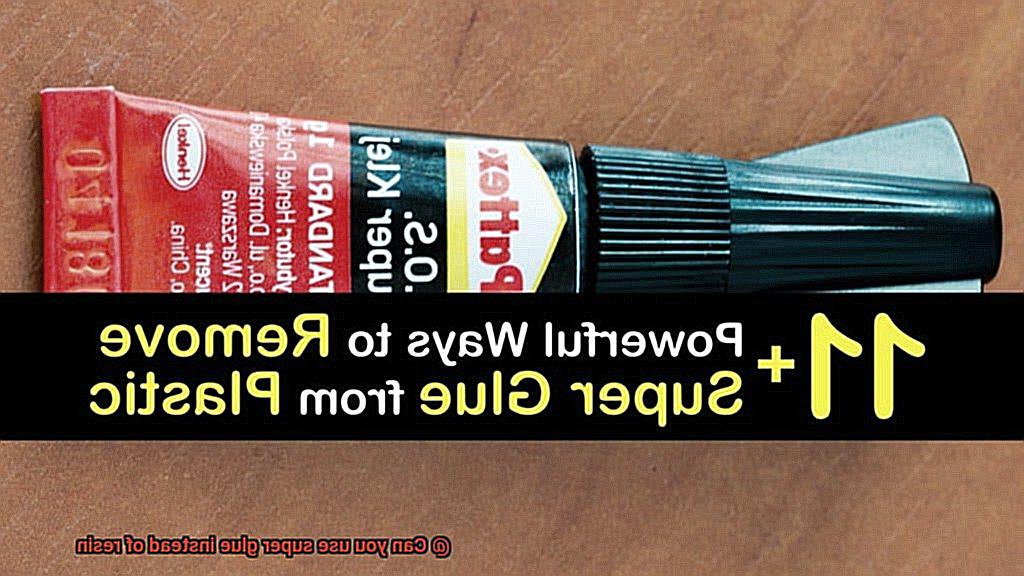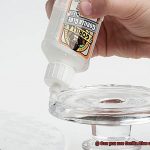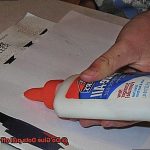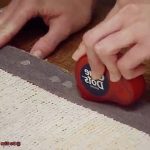Crafters and DIY enthusiasts have long relied on resin as the ultimate material for achieving a glossy, durable finish. But lately, there’s been a buzz around an age-old question: can super glue step up to the plate as a worthy alternative? Today, we dive into this captivating debate to help you make an informed decision for your next crafting adventure.
Super Glue:
Contents
Ah, super glue. This speedy adhesive, also known as cyanoacrylate adhesive, is famous for its lightning-fast bonding abilities. It’s perfect for fixing small objects or joining delicate materials with its strong grip. But does it hold a candle against the versatility and durability of resin?
Resin:
Now, let me introduce you to resin – the jack-of-all-trades in crafting materials. Resin is renowned for its talent in encapsulating and preserving various objects. Whether you’re dreaming up jewelry, coasters, or art pieces, resin delivers that glossy and professional touch. Its self-leveling magic and adhesive properties create a flawless glass-like finish that’ll make your projects shine.
The Pros and Cons:
Sure, super glue may sound tempting with its quick-drying powers, but it does come with limitations. First off, it tends to leave behind visible adhesive lines that can detract from your project’s aesthetic appeal. And beware of sunlight. Super glue isn’t UV resistant, so over time it might yellow or change color under those rays. Plus, when it comes to durability, resin reigns supreme – super glue just can’t match up for long-term use or wear.
But hey. Let’s not throw super glue under the bus completely. For small-scale projects on a budget, it can be cost-effective since it’s often cheaper than resin. And if time is of the essence (we’ve all been there), super glue’s quick setting time allows for immediate handling and use. So, it’s got that going for it.
Conclusion:
In a nutshell, super glue can play the role of a temporary adhesive solution, but it falls short when compared to the versatility and longevity that resin offers. When deciding whether to go with super glue or resin, consider the specific requirements of your project. For quick fixes or short-term craft endeavors, super glue might just fit the bill. But if you’re after durability, a flawless finish, and UV resistance for your masterpiece, resin remains the undisputed champion. Now
What is Super Glue?
Super glue, also known as cyanoacrylate adhesive, is a remarkable adhesive that can bond almost anything together with lightning-fast speed. Made primarily of cyanoacrylate, a clear liquid that hardens upon contact with moisture, super glue is the go-to adhesive for quick repairs and projects that demand immediate bonding.
What sets super glue apart from other adhesives is its versatility and compatibility with a wide range of materials. It can effortlessly bond plastic, metal, rubber, ceramics, and even certain types of wood. Whether you’re fixing a broken toy, repairing a cracked ceramic mug, or constructing a model airplane, super glue has got you covered.
Super glue comes in different forms to suit various needs. Thin super glue flows smoothly and seeps into tight or small areas, while gel-like super glue stays put on vertical surfaces or porous materials. This flexibility ensures that no matter the project, there’s a super glue consistency that will work for you.
One of the most impressive features of super glue is its rapid curing time. While other adhesives may take hours or days to dry and fully cure, super glue sets within seconds or minutes. This means you can bond pieces together quickly and move on with your project without unnecessary waiting.
Once cured, super glue forms an incredibly strong bond that can withstand considerable stress and strain. However, it’s important to consider the materials being bonded and the specific application to ensure the desired strength of the bond.
Super glue is also highly resistant to moisture, temperature changes, and most chemicals. This makes it suitable for both indoor and outdoor use without worrying about degradation or weakening of the bond.
While super glue is a game-changer in the realm of adhesives, it’s crucial to handle it with care. The adhesive can inadvertently bond skin together upon contact, so precautions like wearing gloves and working in well-ventilated areas are essential for safety.
What is Resin?
Resin, a remarkable and versatile material, is worth delving into for its adhesive prowess. Acting as the trusty sidekick to your favorite glue, resin possesses a repertoire of abilities that can overcome any bonding challenge.
First, let’s explore the basics. Resin can be obtained through both natural and synthetic means. Natural resins, extracted from trees like pine or maple, have been utilized for centuries in the creation of varnishes, adhesives, and coatings. Conversely, synthetic resins are man-made substances engineered through chemical processes. These resins often exhibit enhanced durability and possess specific properties tailored to diverse applications.
When you come across resin, it presents itself in a liquid state, eagerly awaiting its chance to work its magic. Comprised of two primary components – a base resin and a hardener – resin undergoes a chemical reaction upon their combination in precise proportions. This transformative process culminates in the solidification and hardening of the mixture, an awe-inspiring metamorphosis before your very eyes.
One of resin’s superpowers lies within its incredible adhesion capabilities. Once applied to a surface, it forms an unyielding bond that endures the test of time. Consequently, resin is ideal for joining different materials or establishing protective coatings. Moreover, let us not overlook its ability to offer clarity and transparency. By incorporating dyes or pigments, resin can be tinted or colored to achieve stunning visual effects.
The excitement does not end there. Resin boasts an additional allure – resistance against water, chemicals, and even UV radiation. This fortitude enables it to triumph over nature’s harshest challenges when employed in outdoor applications.
Whether you find yourself immersed in construction, automotive engineering, aerospace endeavors, or even the realms of artistry and jewelry making, resin stands as your ultimate companion. Its versatility, strength, and aesthetic appeal render it an indispensable tool within your creative arsenal.
Differences between Super Glue and Resin
Super glue and resin may appear similar at first glance, but they possess significant differences that make each adhesive unique. Let’s delve into the intricacies of these two adhesives to understand their distinctions.
Super glue, also known as cyanoacrylate adhesive, is akin to the superhero of adhesives. It boasts rapid action and forms a robust bond in an instant. This adhesive excels at fixing materials such as metal, plastic, rubber, and ceramics. However, it does have a drawback – it is not ideal for larger projects or areas requiring flexibility as it can become brittle over time.
Now, let’s shift our attention to resin. Resin serves as the versatile sidekick to super glue. It is a liquid substance with a wide range of applications, including arts and crafts, jewelry making, and industrial uses. When cured, resin solidifies into a firm state. Although resin takes longer to cure compared to super glue, it is still capable of creating strong and durable bonds.
Composition and properties form one of the major differences between super glue and resin. Super glue operates through a chemical reaction called polymerization, while resin hardens through a process known as curing. This disparity in their composition leads to variations in their versatility as well. Super glue excels in providing quick fixes, while resin can be employed for coating surfaces, creating molds, or encapsulating objects.
The materials you are working with should also be taken into account when deciding between super glue and resin. Super glue may not be suitable for certain materials like fabric or porous surfaces since it may struggle to adhere effectively. In contrast, resin exhibits compatibility with a wide range of materials such as wood, plastic, glass, and even fabric.
Safety is another aspect that distinguishes super glue from resin. Super glue can be toxic if ingested or inhaled and may cause skin irritation or burns. It is vital to utilize this adhesive in well-ventilated areas while avoiding contact with the skin or eyes.
Similarly, resin can also be toxic if handled improperly. Employing proper safety guidelines and protective equipment is crucial when working with resin.
Cost is a final factor to consider. Super glue is generally more affordable and easily obtainable in most stores. Conversely, the cost of resin may vary depending on the type and brand chosen. Additionally, the quantity required for a project should be considered, as some resins may necessitate mixing in specific ratios.
Curing Process of Super Glue and Resin
The curing process of super glue and resin involves the hardening and solidifying of the adhesive or resin to create a strong bond. However, there are notable differences in the way these two substances cure.
Super glue, also known as cyanoacrylate adhesive, undergoes an exothermic polymerization reaction during the curing process. This means that it generates heat as it reacts with moisture in the air or on the surface of the materials being bonded. The heat accelerates the curing process, resulting in a strong bond within seconds or minutes. Super glue is commonly used for quick repairs and bonding small objects due to its fast curing time.
Resin, on the other hand, typically requires a curing agent, such as a catalyst or hardener, to initiate the curing process. The resin and curing agent are mixed together in specific ratios and allowed to react. This reaction triggers the cross-linking of polymer chains within the resin, leading to its hardening and solidification. Resin generally takes longer to cure compared to super glue, often requiring several hours or even days depending on the specific type of resin and environmental conditions.
Several factors can significantly affect the curing process of both super glue and resin. Temperature plays a crucial role, as higher temperatures generally speed up curing, while lower temperatures slow it down.

Humidity also impacts curing, as high levels can accelerate it for some adhesives and resins, while excessive moisture might interfere with the process or weaken the bond. Airflow can also influence the curing process, with proper ventilation aiding in the removal of any byproducts or fumes.
In addition to traditional curing methods, UV light can also be used to cure certain types of adhesives and resins. UV-curable adhesives contain photoinitiators that react with UV light to initiate polymerization. Similarly, UV-curable resins undergo a photochemical reaction when exposed to UV light, resulting in rapid curing.
To ensure optimal bonding strength, it is important to follow manufacturer instructions and guidelines when using super glue or resin. Applying the adhesive or resin in the recommended amount, allowing sufficient curing time, and maintaining suitable environmental conditions are crucial steps. Proper surface preparation, such as cleaning and roughening, also enhances the bonding process.
Viscosity of Super Glue and Resin
The viscosity of super glue and resin plays a significant role in their application techniques and effectiveness for various purposes. Understanding the differences between the two can help determine which adhesive is best suited for a particular project.
Super glue, with its low viscosity, flows easily and penetrates into small gaps and crevices. This makes it ideal for bonding small parts or surfaces that require precise adhesion, such as in crafts or model-making. Its thin consistency allows for easy application using a small nozzle or brush, giving users control over the amount applied.
On the other hand, resin can have varying viscosities depending on the type and intended use. Epoxy resin, for instance, comes in different formulations with different viscosities ranging from low to high. Low-viscosity resins are more fluid and pourable, making them suitable for applications like coating surfaces or creating thin laminates. High-viscosity resins, with their thicker and gel-like consistency, are better suited for filling gaps or creating thicker coatings, as seen in woodworking or fiberglass repairs.
Due to their different viscosities, super glue and resin require different application techniques. Super glue is typically applied directly from the bottle using a small nozzle or brush. This allows for precise control over the amount applied and ensures accurate bonding. Resin, especially high-viscosity types, may require mixing with a hardener before application. They are often poured or spread over a surface using a spatula or roller to achieve an even coating.
It is important to note that super glue and resin are not interchangeable in all applications. While super glue may seem versatile with its ability to bond various materials, its low viscosity may not be suitable for filling larger gaps or creating thicker coatings. High-viscosity resins excel in these areas. Additionally, some resins have specific chemical reactions or curing processes that cannot be replicated by super glue.
When considering compatibility with different materials, super glue is generally compatible with a wide range of materials, including plastics, metals, ceramics, and glass. Resins, however, may have specific formulations designed for bonding particular materials or surfaces. It is essential to choose the appropriate type of resin that matches the material you intend to bond.
Intended Use of Super Glue and Resin
Super glue and resin, the dynamic duo of the adhesive world, possess unique powers that can save the day for your projects. Let’s dive into their intended uses and discover how they can be your artistic superheroes.
Super glue, also known as cyanoacrylate adhesive, is the epitome of precise bonding. Its incredible power lies in its ability to bond quickly and strongly. No matter if you’re working with plastic, metal, rubber, or ceramics, super glue creates a bond that is both sturdy and durable in no time at all. It’s perfect for those small-scale projects that require an adhesive hero to swoop in and save the day. Need a tiny figurine repaired? Super glue is your trusty sidekick.
Resin, on the other hand, is a versatile chameleon with multiple capabilities in the artistic realm. Resins come in various forms and viscosities, allowing them to adapt to different applications. From casting objects in molds to creating exquisite coatings or finishes on surfaces, resin can do it all. It’s the ideal sidekick for crafts, jewelry making, woodworking, and other artistic endeavors. Resin can even be mixed with pigments or fillers to achieve different properties and appearances. Want to create a breathtaking piece of jewelry or coat a tabletop with a lustrous finish? Resin will come to your rescue with style.
However, it’s important to keep in mind that super glue and resin have their own limitations. While super glue excels at small-scale projects, it may struggle with larger gaps or thicker coatings that resin can conquer effortlessly. On the flip side, resin allows for more versatility but may require mixing and spreading with spatulas or rollers.
When Can You Substitute Super Glue for Resin?
When it comes to substituting super glue for resin, there are a few factors to consider. Here are some situations where super glue can be used as a substitute:
- Quick Fixes: Super glue is perfect for small repairs or bonding lightweight objects together. Its fast-setting properties allow for immediate bonding, making it a convenient alternative to resin. Whether it’s fixing a broken vase or securing a loose piece of jewelry, super glue can come to the rescue in a pinch.
- Transparency not Essential: If you don’t require a clear or glossy finish, super glue can work well as a substitute for resin. However, keep in mind that super glue dries with a white or yellowish color, which may not be suitable for all projects. So, if you’re working on something that doesn’t need a transparent appearance, super glue can get the job done.
- Flexibility not Required: Super glue forms a rigid bond, so it may not be suitable for projects that require flexibility. Resin is often preferred for applications where some flexibility is necessary. For instance, if you’re creating something that needs to bend or move, like a flexible bracelet or an articulated figurine, resin would be the better choice.
Before substituting super glue for resin, it’s important to test it on a small area or sample piece to ensure it meets the desired requirements. This will help determine if the bond is strong enough and if the appearance is acceptable. After all, you don’t want your project falling apart or looking shoddy because of an ill-suited substitution.
However, it’s important to note that while super glue can be used as a substitute for certain resin applications, it may not provide the same level of durability or aesthetic appeal. Resin has unique properties that make it ideal for specific projects, and substituting it with super glue should be done with caution and consideration of the desired outcome.
Considerations for Choosing the Right Adhesive
Choosing the right adhesive is crucial for achieving a successful bond between materials. There are several key considerations to keep in mind when making this decision.
Firstly, it is important to consider the materials that need to be bonded together. Different adhesives have different properties and work best on specific materials. Super glue, for example, is known for its ability to bond quickly and strongly to a wide variety of materials such as metal, plastic, and rubber. On the other hand, resin is typically used for bonding materials such as wood, ceramics, and glass.
The strength of the bond required is another important factor to consider. Super glue is renowned for its strong bonding capabilities and is often used for applications where a permanent and durable bond is needed. Resin can also provide a strong bond, but it may require additional reinforcement or curing time depending on the specific type of resin being used.
The application method is also a significant consideration. Super glue is typically applied directly from a tube or bottle, making it easy to use for small-scale projects or repairs. On the contrary, resin often requires mixing and precise application techniques. This means that resin may be better suited for larger-scale projects or applications where more control over the adhesive’s placement is required.
Additionally, it is important to consider the intended use and environment in which the adhesive will be used. Super glue is generally not recommended for applications that involve constant exposure to water or extreme temperatures, as it may weaken or break down over time. Resin, on the other hand, can offer better resistance to moisture and temperature fluctuations, making it suitable for outdoor or high-temperature applications.
Safety should always be a priority when choosing an adhesive. Super glue can release fumes during application, so it is important to use it in a well-ventilated area or wear protective equipment if necessary. It can also bond skin together quickly, so caution should be exercised to avoid accidental contact with fingers or other body parts. Resin may have specific safety considerations depending on the type of resin being used, such as the need for proper ventilation or protective gear during mixing and curing processes.
Lastly, cost and availability are practical factors to consider. Super glue is widely available and relatively inexpensive, making it a convenient choice for small-scale projects or quick fixes. Resin, on the other hand, may be more specialized and require a larger investment in terms of cost and availability.
JVTXc1LjQx0″ >
Conclusion
Yes, you can use super glue instead of resin. However, it is important to note that super glue and resin are not the same thing and have different properties. While both can be used for bonding materials together, they have different strengths and durability.
Super glue, also known as cyanoacrylate adhesive, is a fast-acting adhesive that forms a strong bond quickly. It is commonly used for small repairs and projects where a quick fix is needed. Super glue works well on non-porous surfaces such as metal, plastic, and glass.
Resin, on the other hand, is a type of synthetic material that hardens when mixed with a catalyst or hardener. It is commonly used in crafts, jewelry making, and woodworking projects. Resin provides a clear and glossy finish and has excellent adhesion to various materials like wood, concrete, and fabric.
While super glue can be used as a substitute for resin in some cases, it may not provide the same level of strength or durability. Resin is specifically designed for certain applications where its unique properties are required.
In conclusion, while super glue can be used instead of resin in certain situations, it is important to consider the specific needs of your project.






